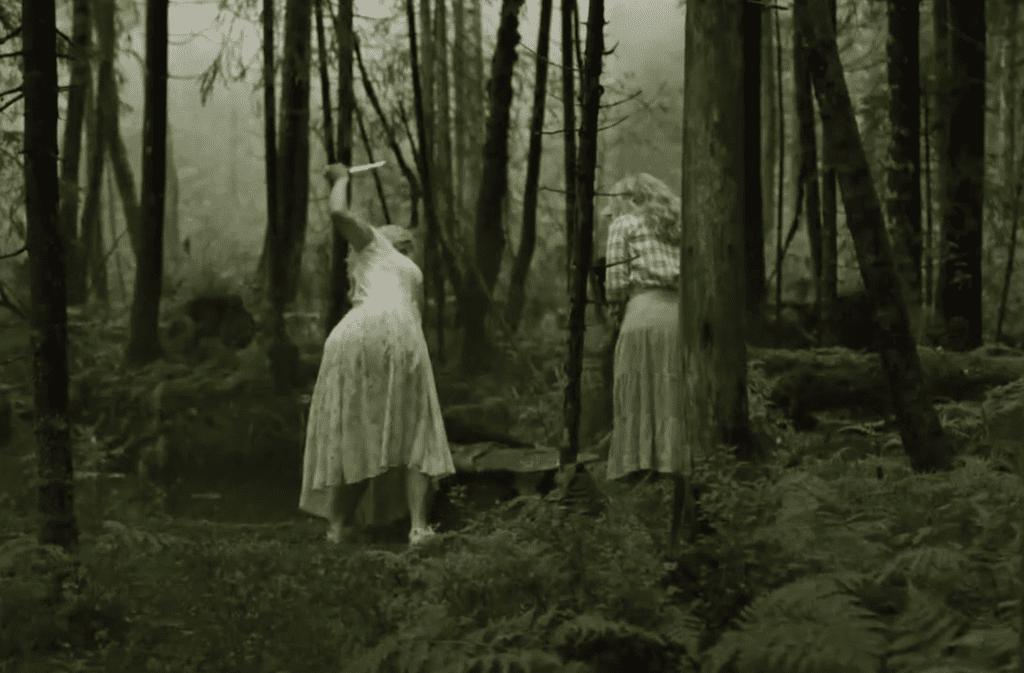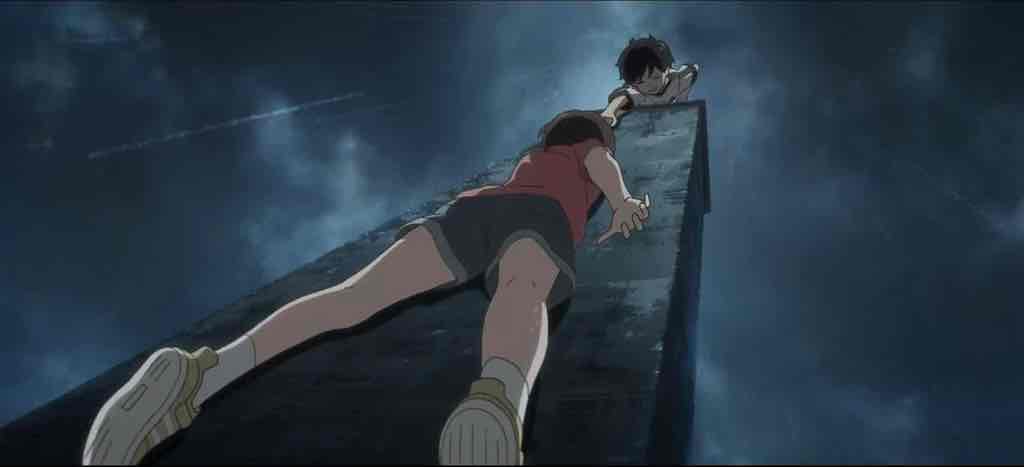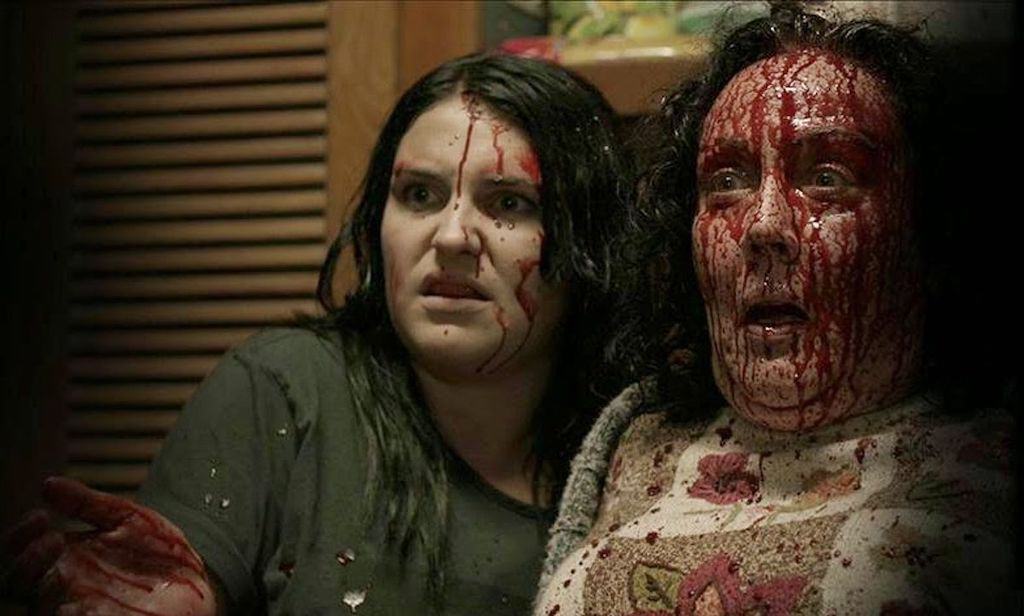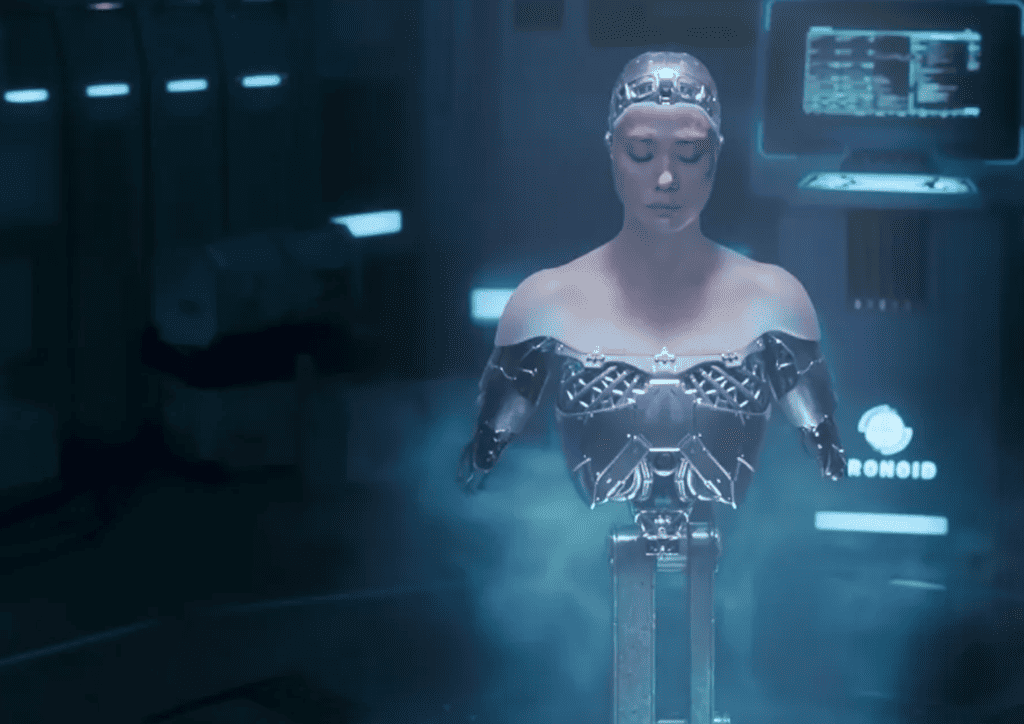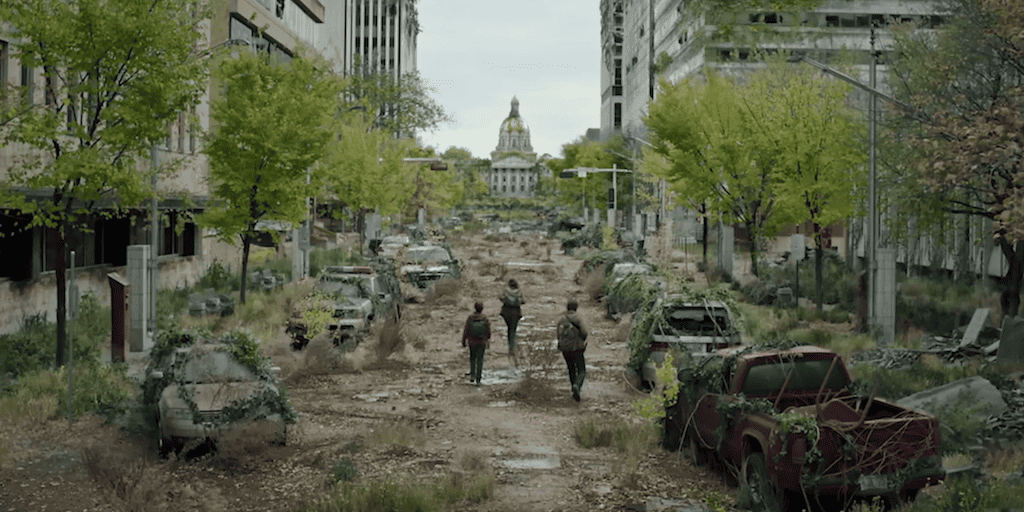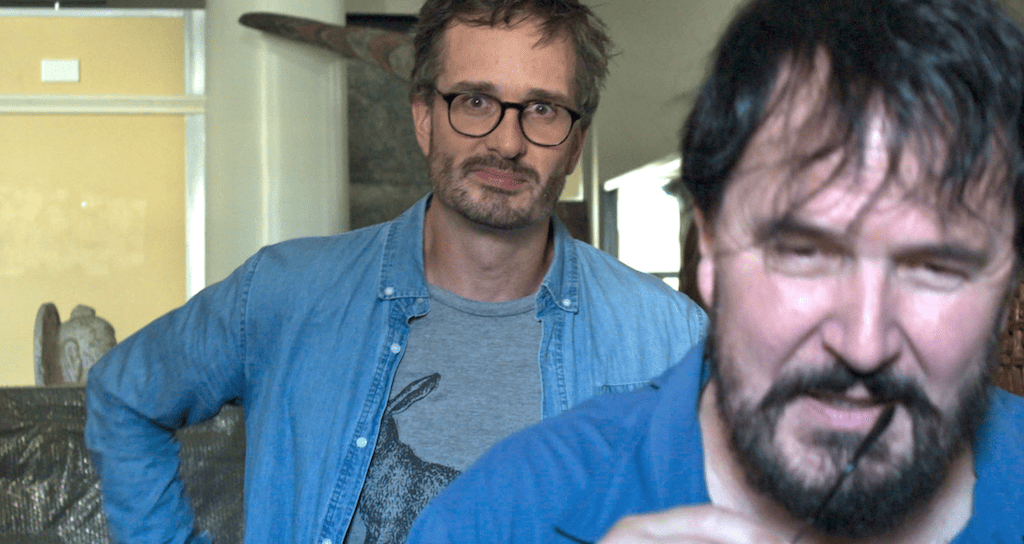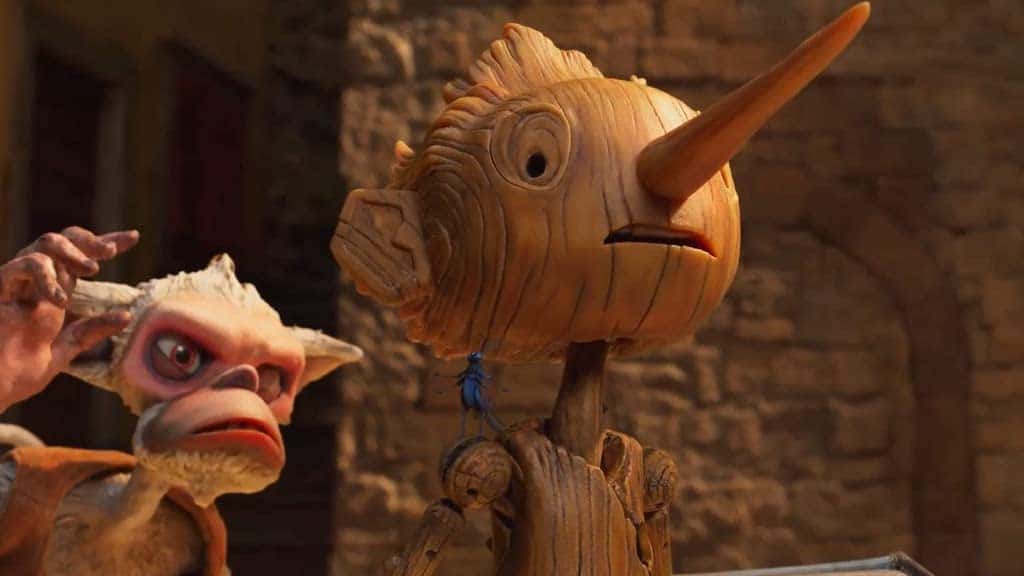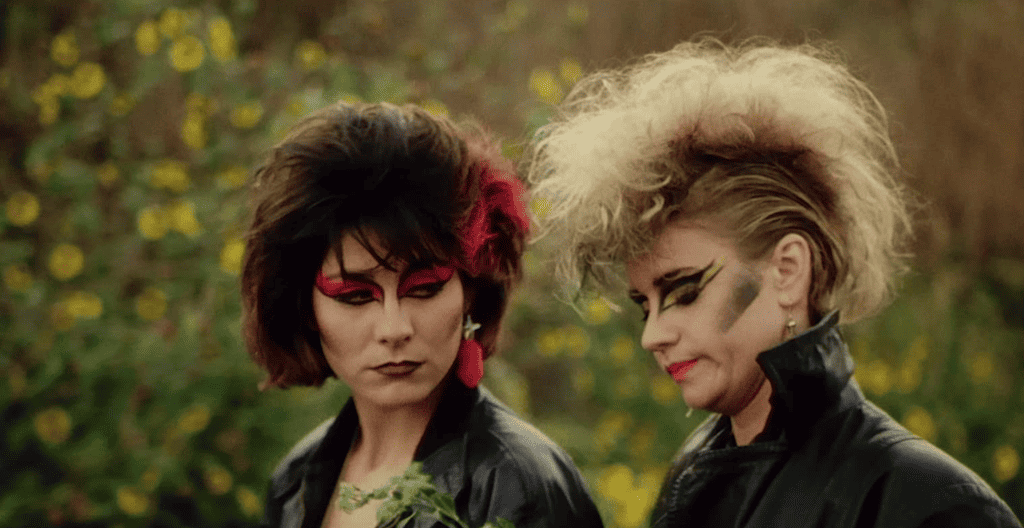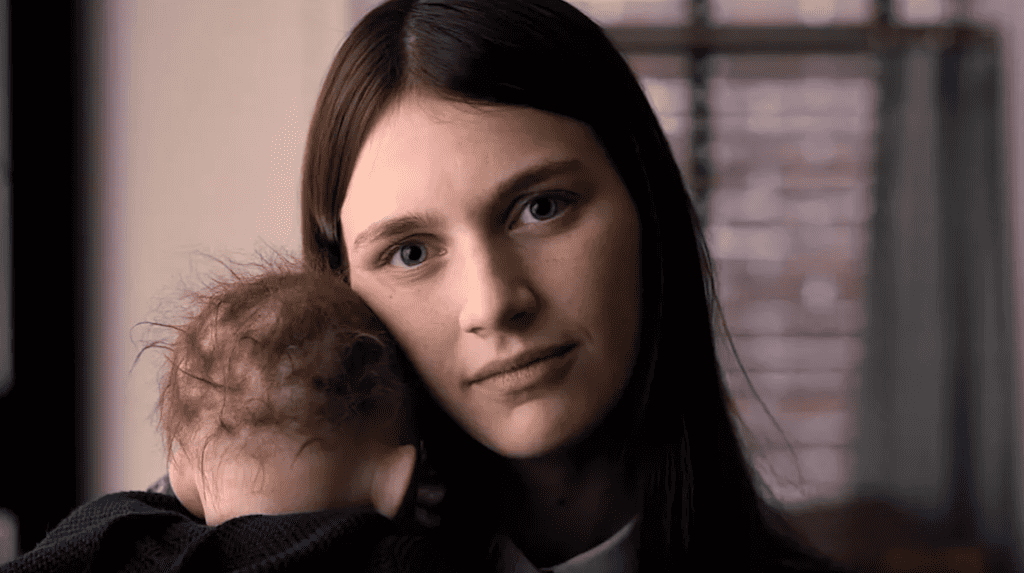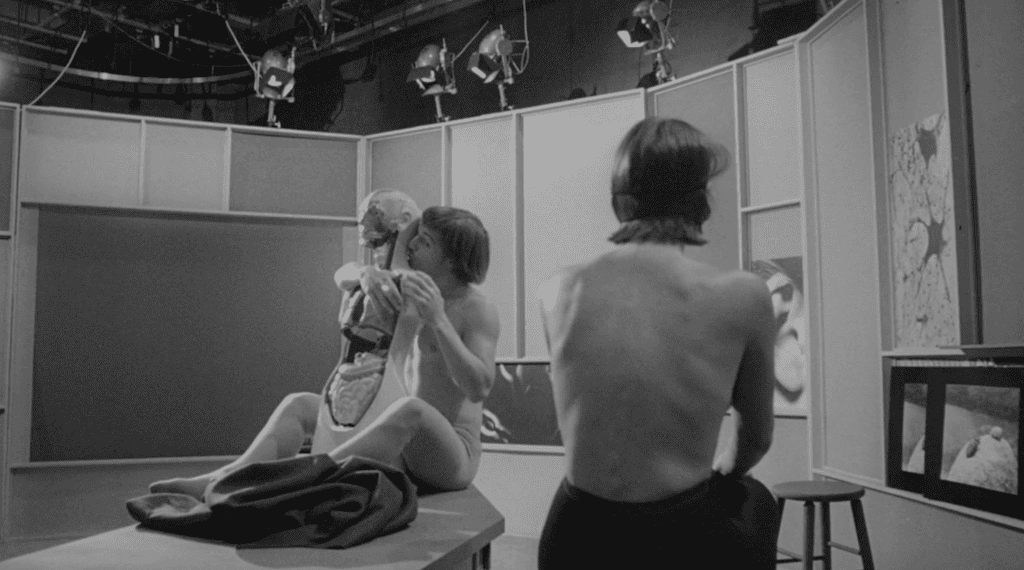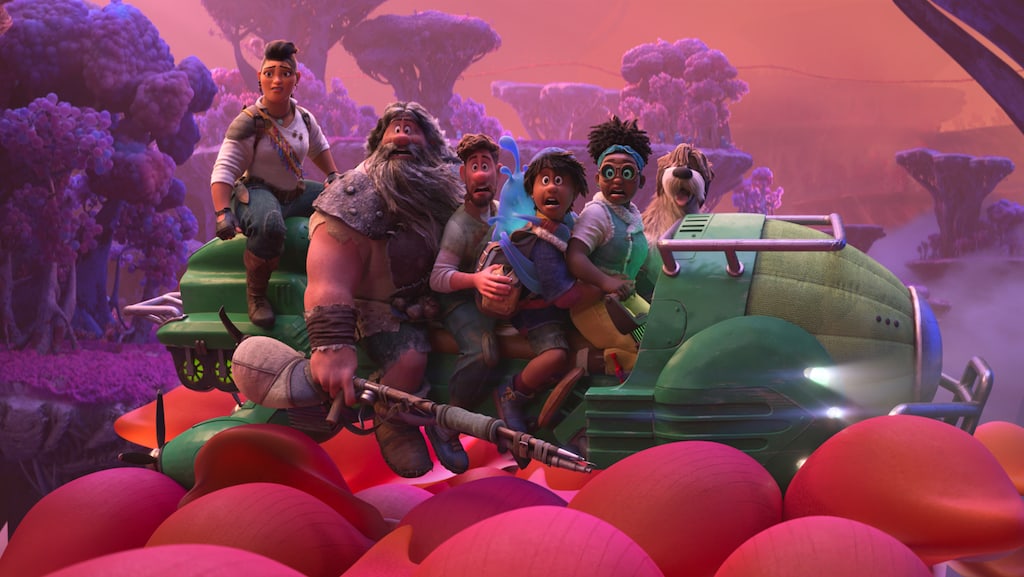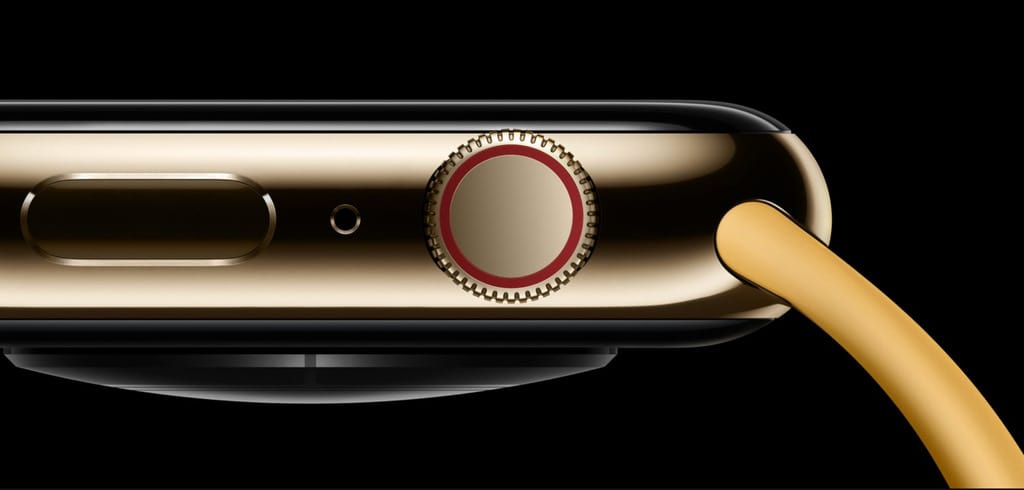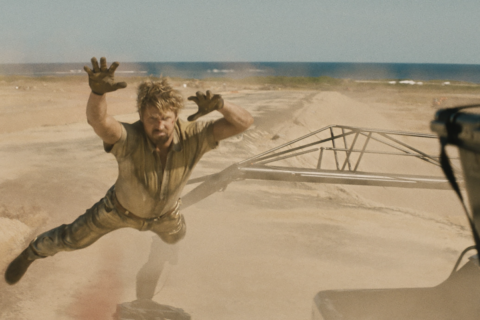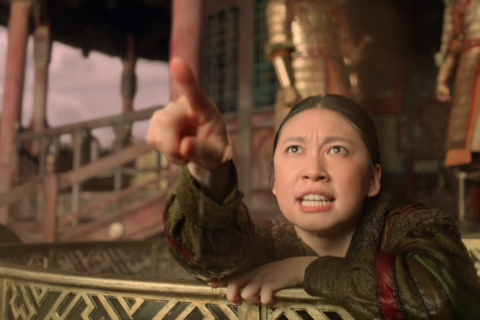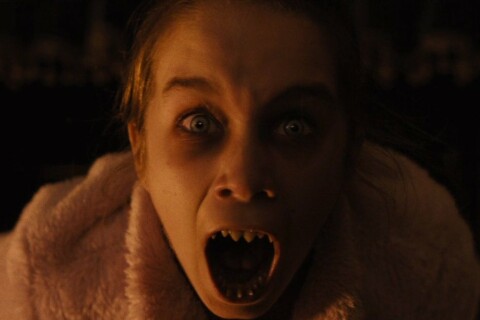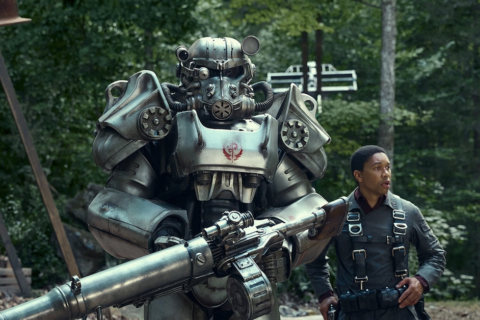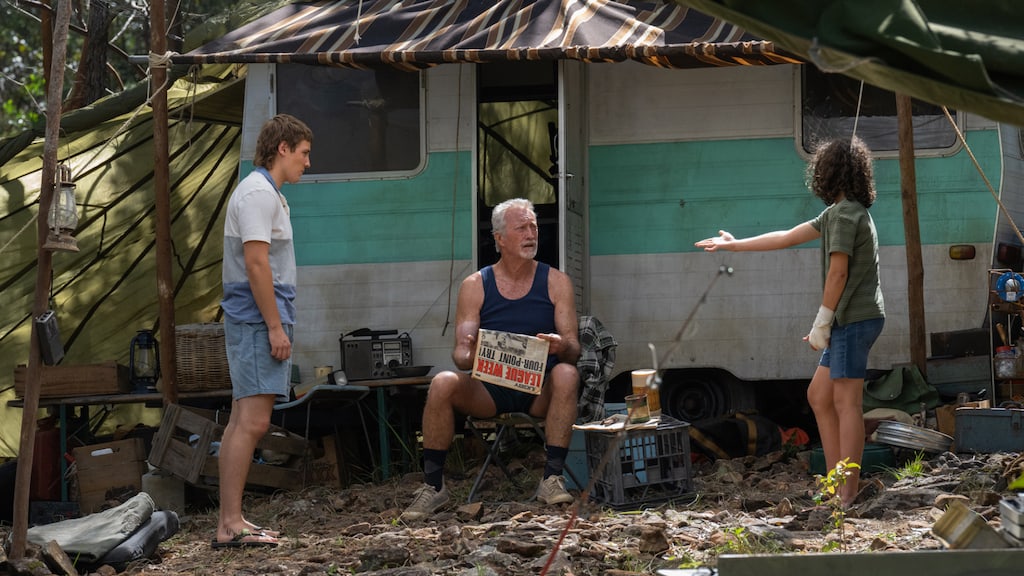A regular column in which GARY STEEL sifts through the mountain of available streaming TV and brings your attention to great new and old shows as well as those to avoid.
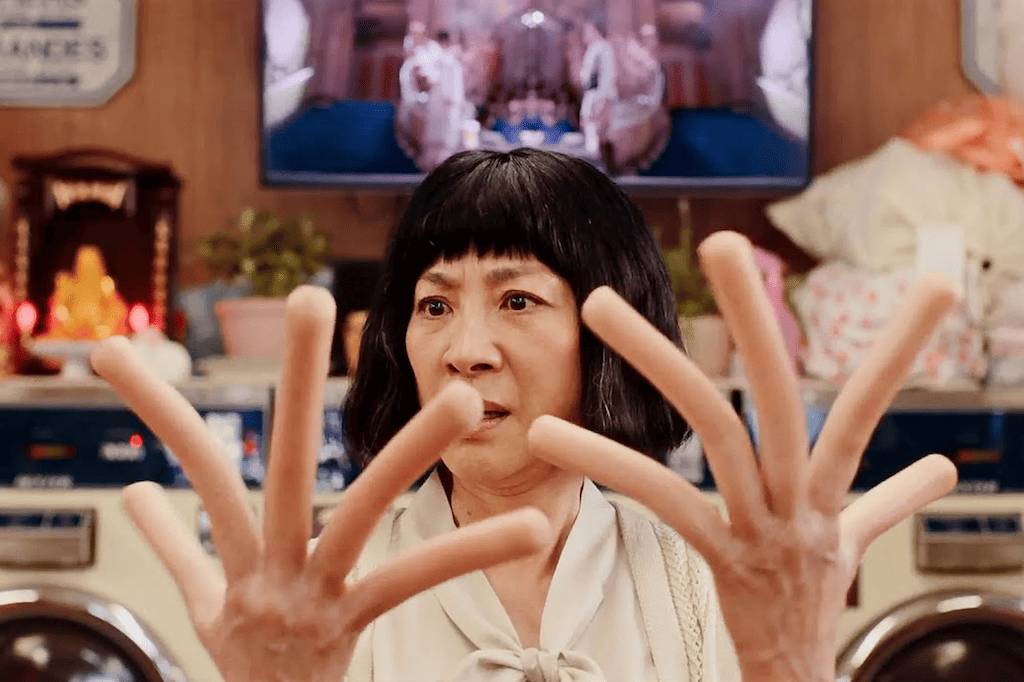
Having endured the laboured and often excruciating Guillermo del Toro’s Cabinet of Curiosities, against all odds I found myself watching this similarly-themed six-part Norwegian anthology series. Amazingly, each of its self-contained 30-minute episodes manages to articulate an unusual story with skill and economy. There’s no room for flab or indulgence and the stories concentrate on building up a sense of dread with a brief and shocking denouement.
While some of the stories are better than others, overall, the Nordic setting makes for a delicious twist. For instance, one episode finds a down-on-their-luck couple and their young daughter moving to a decrepit country house in a rural area where each of the friendly neighbours bizarrely carries a cat or dog around with them. It turns out that there’s a stone in the forest that goes back to Viking times that brings good luck and riches when a person slaughters a much-loved pet (or human) on it. You can imagine what transpires. Bloodride (2020) is far from essential viewing, but its bite-sized episodes make it an easy watch.
 Dreaming Walls: Inside The Chelsea Hotel (DocPlay) 5/10
Dreaming Walls: Inside The Chelsea Hotel (DocPlay) 5/10
Those looking for a filmic history of New York’s legendary Chelsea Hotel will leave 2022 documentary Dreaming Walls bitterly disappointed. Instead of telling its incredible story, directors Amélie van Elmbt and Maya Duverdier instead choose to put together an impressionistic elegy to the hotel, which is slow, short on details or explanations, and therefore both frustrating and a little dull. The only real attempt to tell the story is made through back-projected footage of some of the stars that stayed there onto the gloomy walls of the interior. Instead, the film focuses on the sad lives of the few remaining, elderly tenants, who are trapped in a building slowly being converted into a modern hotel, and having to navigate with their walkers through what amounts of a construction zone.
Had the film made an attempt to explain any of this, it may have made for a more interesting experience, but its presentation seems almost intentionally obscure and pretentious. The whole film is box shape like an old TV picture, presumably because they make extensive use of old footage of the now elderly artists they profile. But even the individual tenants aren’t properly profiled, and instead are just caught in momentary conversation or actions suggestive of their fragile existence. Dreaming Walls could have made for a lyrical and emotional portrait of both the hotel and its current residents, but frustratingly, the way it’s put together is so verité in the most humdrum fashion that the result is sheer frustration. At least, that’s how I felt about it. Those with a keen interest in the interiors of historic spaces may find the footage fascinating. It’s certainly sad to see such a cultural landmark being slowly butchered beyond recognition.
Drifting Home promises so much, and yet ends up delivering so little. Aping the imaginative Studio Ghibli style with both its theme and style, this bloated (119 minutes!) epic is really a cliched and sickly sentimental coming-of-age anime that despite its striking visuals, never achieves lift-off. The story is based around two high school-age former friends who visit an abandoned housing complex and find themselves literally drifting across the ocean. That is, the derelict apartment itself is lost at sea and they’re drifting aimlessly (and eventually as they discover, slowly sinking). Naturally, there’s conflict, and they have to figure out their differences.
Not without its moments, Drifting Home is sadly ruined by weak characterisation, dull and annoying dialogue, and poor pacing. Way too long for its slender content and muddled storyline, the film completely loses its balance when it breaks into a sickly song. There’s so much entertaining (if stereotypical) anime out there that it feels extra tragic when a film like this comes along suggesting so much and yet delivering so little.
Netflix has such a huge catalogue that it’s inevitable some shows slip under the radar. Such is the case with this hugely enjoyable 2017 series. Filmed in Hokkaido, Japan, Erased is about Satoru, a young man who is accused with the murder of his mother. But before that happens, we learn that he has the ability to go backwards in time by five minutes, thereby averting unfortunate events and accidents. When his mother is killed, however, he finds himself 18 years in the past, and the series from there spends much of its time focusing on Satoru as a child sleuth researching and preventing the murders of other children. And inevitably, ultimately, discovering his mother’s assassin in the process.
What’s really great about Erased is that the focus isn’t on generic flashy special effects but instead, its 12 bite-sized 30-minute episodes soak up the locale and we get a good sense of snow-driven daily life in Hokkaido back in the 1990s. Quite apart from the fantasy element, at its core Erased is a brilliant, emotional drama with a fetching cast and gorgeous cinematography. Reo Uchikawa is especially great as the cute 10-year-old version of Satoru and there’s something almost poetic about this subtle show, despite its disturbing subject matter.
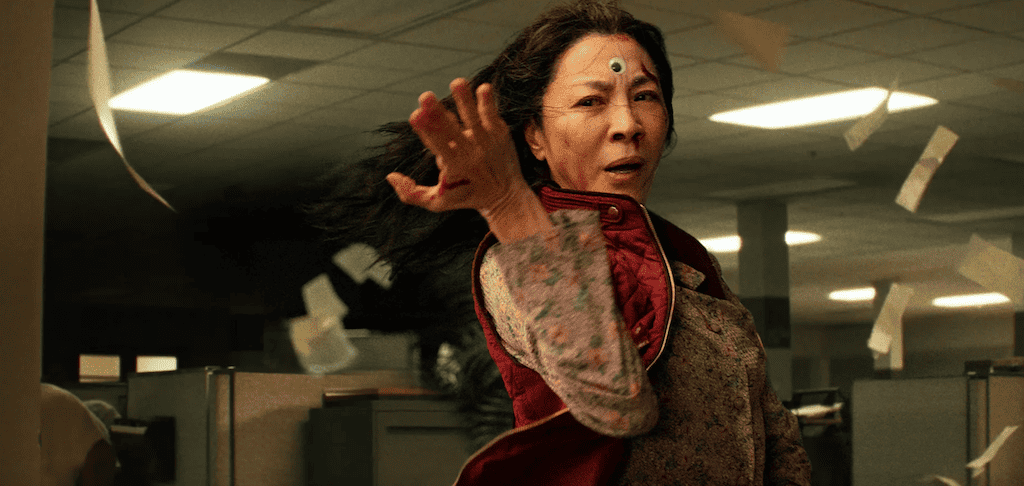 Everything Everywhere All At Once (Neon & Prime Video) 9/10
Everything Everywhere All At Once (Neon & Prime Video) 9/10
Reviewers have turned themselves inside out just trying to describe this incredible film, which was recently the recipient of multiple Oscars… and deservedly so. During its very intense (but also very entertaining) two hours and 19 minutes there’s never a dull moment, and by the time the credits finally roll you’re aware of just how formulaic most films and TV dramas are in comparison. Everything Everywhere All At Once is an appropriate title for a movie that constantly surprises the viewer, challenging with a constant morphing between a multiplicity of realities. Michelle Yeoh (StarTrek: Discovery, Crouching Tiger Hidden Dragon) is superb as the harassed and overwhelmed matriarch of a Chinese-American family with a debt-ridden laundromat business and big tax problems, while Jamie Lee Curtis (Halloween, True Lies) is also wonderful as the horrid tax department representative.
But while the acting is all good in this award-winning film, it’s the innovative way it’s put together that makes it truly special. At its heart Everything Everywhere All At Once is a moral fable about how a family needs to pull together to survive, but it pulls all the stops out in a creative tour-de-force that will satisfy anyone who loves a wild and unpredictable ride, with brilliant (and frequently funny) martial arts-influenced fight sequences, while fusing elements of fantasy, sci-fi and comedy. It’s the kind of film you could watch repeatedly and still keep noticing things you’ve missed.
 Glass Onion: A Knives Out Mystery (Netflix) 6/10
Glass Onion: A Knives Out Mystery (Netflix) 6/10
Funny how sometimes the most instantly and easily enjoyable films are also the most forgettable. I remember being hugely entertained by Knives Out (2019), in which Daniel Craig played detective Benoit Blanc in an outrageously updated whodunnit that made Agatha Christie seem dull indeed. But I don’t remember a thing about it. Glass Onion is a standalone sequel that’s about as preposterous as a James Bond plot and once again, at least as instantaneously enjoyable as a large popcorn and a naughty ice-cream at the movies. But speaking of the elephant in the room for a moment (James Bond), the one inevitable flaw is Craig’s over-the-top performance and ridiculous Southern drawl. Yes, I get that it’s hard for the actor to reinvent himself after 007, but a little subtlety in characterisation might help.
Happily, however, the supporting cast and the surprising twists and turns override that wee worry. The story concerns multibillionaire Miles played by Edward Norton (The Bourne Legacy) who invites some associates and notables to his private Greek island to participate in a murder mystery game, which soon becomes a real murder mystery. Especially appealing is singer/actor Jonelle Monae as Helen, the twin sister of Miles’ double-crossed (and murdered) former associate Andi Brand, who collaborates with Benoit to solve the case. If you think about it the whole thing becomes quite silly, but the trick is to just let it carry you along on its wild ride.
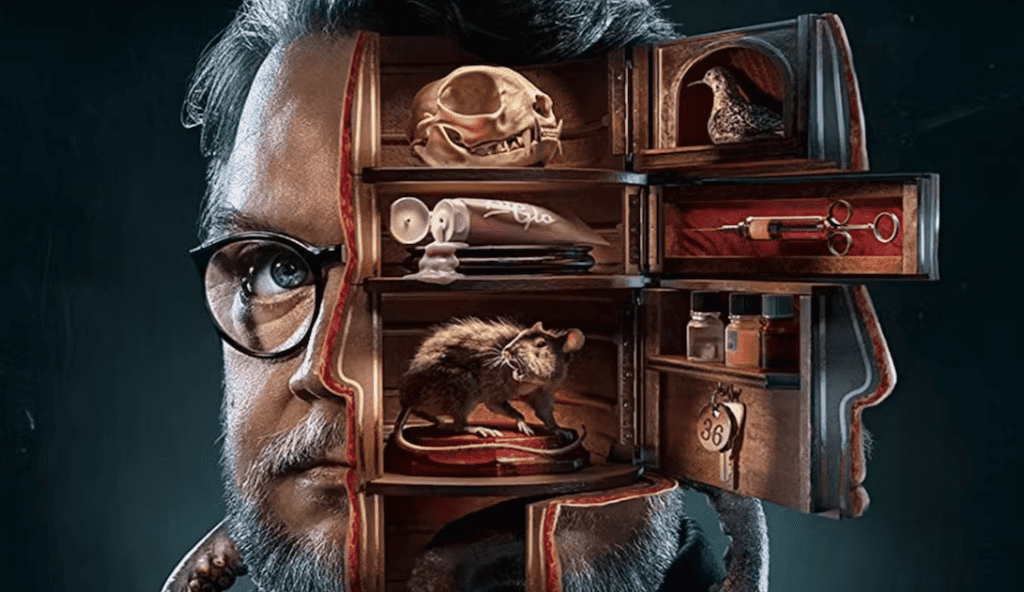 Guillermo del Toro’s Cabinet of Curiosities (Netflix) 5/10
Guillermo del Toro’s Cabinet of Curiosities (Netflix) 5/10
An anthology of eight scary stories introduced by Guillermo del Toro (director of the wonderful Pan’s Labyrinth and the very entertaining Hellboy) but featuring the work of a number of directors and writers, Cabinet Of Curiosities is slick and expensive, but feels utterly pointless. Why is that? Perhaps the anthology format is simply a relic of the past that’s had its day, and is no longer effective or believable. Back in the 1960s, shows like The Twilight Zone and Outer Limits reflected our fascination with the bizarre and unknown, but try watching an episode in 2023 and the stories and format feel clunky and simply not believable. They were from a simpler time, and by the time The Twilight Zone was rebooted in the 1980s with the major motion picture treatment, the concept already felt hackneyed.
Part of the problem is that there’s only so much story you can fit into an hour, which forces the writers to create archetypes for characters to fit a bizarre turn of events and often a moral conclusion. Take ‘Lot 36’, for instance. Directed by del Toro himself, this episode focuses on a Scrooge-like character who purchases an abandoned storage lot, and who refuses to help a dispossessed Mexican immigrant who wants to recover some personal effects. He’s a nasty right-wing fuck, basically, and he gets what’s coming: acting with extreme stupidity and arrogance, he breaks the seal of an old book and unleashes a killer demon. There’s a bit more to it, but that’s basically it. He gets what’s coming. It’s a disappointingly obvious story and conclusion, but it’s probably the best of the lot. Reading about the other seven stories on Wiki is much more entertaining than actually watching them, because they’re simply so silly, and predictable in their outlandishness.
 Harold & Lillian: A Hollywood Love Story (DocPlay) 9/10
Harold & Lillian: A Hollywood Love Story (DocPlay) 9/10
The thing I love about documentaries is that as often as not, it’s the unlikely subject matter that makes for a cracking watch. I’d never heard of Harold and Lillian Michelson, and wouldn’t have thought that the story of a Hollywood couple who were respectively a storyboarder and a librarian would have made for a compelling tale, but the 2017 film Harold & Lillian turns out to be both revelatory and heartwarming. Harold’s storyboard drawings were key to a number of great films, even though he was seldom credited. For instance, he came up with that iconic image of Dustin Hoffman under Anne Bancroft’s legs in The Graduate, and provided the visual settings for the most distinctive scenes of the film, as well as working closely with Alfred Hitchcock on his classic, The Birds. And Harold’s wife of 60-plus years, Lillian, was a research librarian for many distinguished films and a much-loved cog in the motion picture machinery.
The couple’s romantic story is also refreshingly different. Lillian had been a poorly treated orphan and was rejected by Harold’s family, so they effectively eloped to LA. In an industry with rampant infidelity and divorces, the couple remained devoted to each other throughout their lives, and in an era when the condition wasn’t understood, successfully raised an autistic boy with a good deal of love and perseverance. Harold & Lillian tells their story with quirky illustrations, interviews with various industry figures including actor/directors Mel Brooks and Danny DeVito, with reference to a treasure trove of archive material. When the film ended I felt like I’d really learned something, both about the craft of film-making and what love requires.
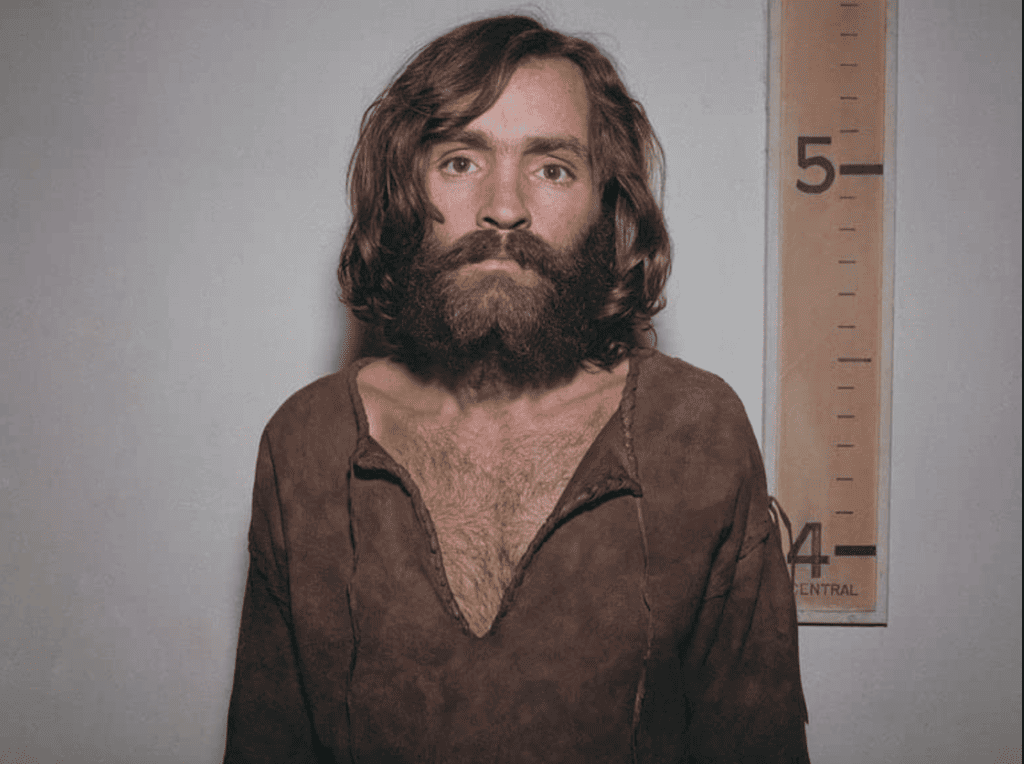 Helter Skelter: An American Myth (Neon) 7/10
Helter Skelter: An American Myth (Neon) 7/10
It’s hard to know what yet another documentary about Charles Manson and his “family” could add to the sum of knowledge or understanding of the homicidal freak and his bizarre story, but the six, hour-long episodes of this 2020 series benefits hugely from not having to condense the various strands of the story into bite-sized infotainment pieces. Although there have been numerous documentaries and books and even dramatizations, Helter Skelter: An American Myth attempts – and mostly succeeds – in casting light on a story that requires the extra length in which to explore the complex strands. As a crime story, there have been many more shocking killers than Manson and his girl puppets. The enduring interest in Manson is the way his story intersects with a moment in time in the hippy Los Angeles of the late 1960s in both the worlds of music and film.
https://www.youtube.com/watch?v=Xot1jts4zmI
Refreshingly, the first episode is entirely spent on Manson’s early life and upbringing in a stern religious environment. By the time he emerges from prison to join the flower power youth in San Francisco, he’s already spent most of his life incarcerated. Interestingly, in jail he studied Scientology and took Dale Carnegie’s course in ‘How To Win Friends & Influence People’ and on his release, set out to use the technique to find young hippy girls to pimp. Persuading young runaways to join his commune near LA, he believed that by befriending the Beach Boys’ drummer Dennis Wilson he’d get a record contract, but was rejected. While an adapted version of his song ‘Cease To Exist’ did end up on a Beach Boys album, it was this rejection that ultimately led to the murderous rampage at 10050 Cielo Drive, in which film director Roman Polanski’s 8-month’s pregnant wife was stabbed to death. The series sensibly gives a decent amount of time to the commune itself and its peculiar lifestyle, Manson’s attempts to forge/force a music career, as well as the crimes, the societal outrage, and the trial. It’s packed with seldom-seen footage and new interviews with some of the “family” and associates. The only real flaw is a technical one: several of the scenes are repeated during the course of the six episodes, which I can only assume to be an editing mistake that should have been rectified before the documentary reached the public gaze.
 The Hitler Chronicles – Blueprint For Dictators (DocPlay) 6/10
The Hitler Chronicles – Blueprint For Dictators (DocPlay) 6/10
Do we really need yet another documentary on Adolf Hitler? Well, if history can teach us anything, then it’s a story worth telling, and showing to successive generations. The four-part Hitler Chronicles (2018) digs into his early life and shows how he became angry and disenchanted, and eventually, saw his chance to make a difference. Even with all the facts in front of us, it’s hard to accept the ludicrous lies he used to suck the German people into his despicable way of thinking, and the horrific price that his totalitarian rule ultimately inflicted on the world through the many millions who lost their lives in World War II.
Unfortunately, the technique the filmmakers use to tell Hitler’s story is clunky and disjointed. Instead of proper narration, it literally uses excerpts from observers and participants, and the way these are read out is confusing and leaves the viewer wanting more. It’s a deep flaw to the presentation that fails to flesh out a story that can’t be told by the accompanying footage alone. There’s lots of colour film from the era and it promises to be “the most extensive compilation of archive material to date”. For me, it’s the rare and mostly unseen footage of life in Germany in the late 19th and early 20th century that’s really spectacular. But while it sets the scene for the early life of one of the most heinous killers of our times, Hitler is somehow still lurking in the shadows, and maybe we’ll never get a clear picture of what shaped him. In our troubled times, in which the increasingly fragile institution of democracy is once again threatened by those who would rather be ruled by insane despots, it’s worth trying to get a grip on how it happens, if only to figure out how to stop the madness.
Intrigued by director Gerard Johnstone’s huge success with M3gan, I checked out his 2014 feature debut, Housebound, to see whether this earlier film showed a real talent on the way to his big break. Set almost entirely within the confines of a creepy old house, the film stars Morgana O’Reilly as Kylie, a troubled young woman sent to live with her mother, Miriam (Rima Te Wiata) on house arrest. This comedy-horror is rather uneven and is somewhat hampered by the kind of over-the-top, histrionic performances typical of Kiwi movies. Oddly, we never get any real perspective as to where this house is. We know that there’s a weird chap living in a rundown house next door, but is it in the country, or rural? We’re never shown, as most of the shots are of interiors or at night.
Despite these flaws, however, Housebound is worth catching for some surprising twists, and especially, the crazed culmination, which features some very funny lines and an outrageous death. What at first seems like it’s going to be another boring ghost story is much more interesting than that. It turns out that the house had been used as a home for disturbed children, that a young girl had been murdered there, and that the killer had never been found. As an ex-meth user with psych issues, no one believes Kylie when she discovers all sorts of odd things in the old house including hidden passages and someone living in its walls. It’s an easy watch and it gave me more than a few hearty chuckles.
It’s sad that the late Kang Soo-yeon couldn’t have gone out on a better note. Like so many Korean dramas, the tone of the script and performances are all over the place, which makes it hard to take this new film seriously. Set in 2194 in a post-apocalyptic future when earth is no longer habitable, Jung_E stars Soon-yeon (who in real life tragically died of a cerebral haemorrhage before the film’s release) as the scientist daughter of a mercenary who died on a mission to earn the cash to pay for her (then) child’s cancer treatment. The grown-up daughter is the research leader in a project that has cloned her mother’s brain and utilised her fighting skills in battle against killer robots. Except that the daughter’s cancer has returned and her superiors are planning to kill the project and delete her Mum’s cloned brain forever. Golly.
The saving grace of the film are the special effects sequences, which are exciting and skilfully executed. The killer robots (or humanoids, or whatever they’re called) are really scary and there are some decent martial arts-style fighting scenes. But Soo-yeon’s performance is just plain odd. Her visage is almost mask-like, and her acting rather wooden. Perhaps it’s not bad acting but some kind of hangover from traditional Korean theatre? Worse than that, some of the scenes featuring a friendly colleague (who in fact turns out to be a fiend) suddenly erupt into slapstick humour, utterly spoiling the mood in the process. Worth it for the action scenes if you can handle the awful bits.
As if we didn’t already have enough pestilence, what with killer viruses and now cyclones flinging themselves at us. You’d think that there wouldn’t be a demand for televisual entertainment about such things. But here it is, HBO’s latest hit, The Last Of Us, the most talked about and acclaimed series of the year so far. In this six-part series global warming has enabled fungal bacteria to attack and control humans and effectively, turn them into cannibalistic, zombie-type creatures. Which on paper sounds rather like a lot of other post-apocalyptic shows. Its origins are even a game. But The Last Of Us is startlingly different.
Set mostly 20 years after civilization was nearly eradicated in 2003, the action takes place as ex-soldier/truckie Joel (Pedro Pascal from Game Of Thrones) escapes a cordoned-off quarantine zone to smuggle 14-year-old Ellie (Bella Ramsey) across a very dangerous and infectious America. He’s accompanied by his bad-ass partner Tess (played by Anna Torv, who some may remember from Fringe) who ends up getting killed off shockingly and brutally early in the series. New Zealand actress Melanie Lynskey also plays a supporting role. What makes it so special? That’s hard to pinpoint, but from the get-go, the programme has an almost documentary-like look and you always feel like you’re right there in action. The performances almost always strike the right note and the action scenes are dynamic and often shocking. Unmissable.
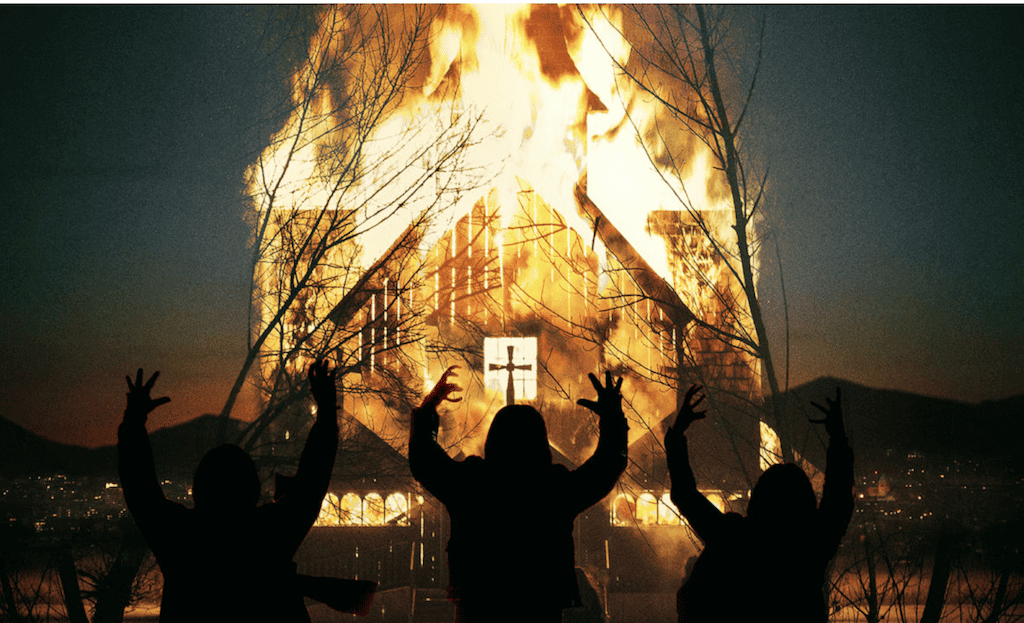 Lords Of Chaos (AMC/Shudder) 8/10
Lords Of Chaos (AMC/Shudder) 8/10
Most of the time music biopics are rubbish. This fact alone makes Lords Of Chaos a real stand-out. Somehow, director Jonas Åkerlund (former drummer of the metal group Bathory) figured out a way to tell a difficult story with just the right tone to make it seem real. There are echoes of both Spinal Tap and Bad News in some of the idiotic behaviour displayed by the young Norwegian death metal musos in this true story, and it’s to the credit of the writers, actors and director that moments of fun and levity are allowed to surface in what is ultimately a very grim tale. Most serious rock fans have heard about the Norwegian black metal band Mayhem, whose members infamously went on a church-burning spree. They also know about the end of the story, when bassist Varg murders the band’s leader, Euronymous. Lords Of Chaos (2018) is the story of the group’s formation, increasing notoriety and shocking end.
If there’s a weakness, it’s the lack of any real detailing of the music itself, which tends to make the band seem simply like a bunch of miscreants looking for a good old bad old time. But that’s typical of biopic screenwriting, which always focuses on the story and characters first. It has to be said that Lords Of Chaos makes for uncomfortable viewing at times, especially given the disturbingly nihilistic mindset of original vocalist Dead (a fruit loop who does, in fact, die a gruesome death quite early on) and Varg, who puts his angry anti-Christian crusade ahead of any other pursuit, including the band and its music. The violence and especially, the self-harm in the film is shocking, although Wellington’s early ‘80s bootboys could probably have given them a run for their money. Jack Kilmer (son of Val) is incredible as the doomed Dead, and Emory Cohen (The OA) is very effective as the deadly Mummy’s boy Varg. Singer Sky Ferreira is also notable in her realistic portrayal of Euronymous’s girlfriend. Rory Culkin is excellent too as Euronymous, the record shop-owning brains behind Mayhem, but it’s perhaps a stretch too far to have him narrating the story from beyond the grave. Top stuff!
After all the hype around former Kiwi TV journalist David Farrier’s documentaries I was expecting a little more from the much-ballyhooed Mister Organ, a film about a shadowy character whose life appears to revolve around a rather sadistic need to control and bully people. Farrier has succeeded in making a feature documentary about a subject that really might have been simply a Fair Go item, had that programme not long ago given up genuinely fighting for people’s rights against unscrupulous outfits and individual creeps.
There seems little doubt that the so-called Mister Organ is a creep, and that he’s inflicted untold misery on a long list of ex-flatmates, former business associates and… well, just about anybody he meets and sucks into his sick vortex. But does it really justify a feature film, and is he even interesting enough for the viewer to want to accompany Farrier on his quest to discover the real Mister Organ? Not really. And Farrier’s approach – which is to make himself a central character – quickly palls. Mister Organ is dumb enough to allow himself to be extensively interviewed while giving very little away, which gives the creep oxygen we’d rather deprive him of while boring us with his inanities. So no. While I felt sorry for his victims, somehow the filmmaker’s approach seemed off-centre.
Guillermo del Toro’s re-imagining of the Pinocchio story is radically different from past iterations. For one, the story itself is inspired by both the original Italian novel from 1883 and a 2002 illustrated book, which means that fans of the classic Disney version may be left wondering what the heck is going on. Which isn’t a bad thing in itself. It’s also a musical of sorts (what’s with that?) and its commentary of Fascist Italy is likely to completely bamboozle the tiny tots. Oh, and the film is also a kind of souped-up stop-frame animation, which gives it a unique and rather compelling look.
I couldn’t help wondering just how many versions of Pinocchio the world needs, as there was also a live-action rendition of the story in 2022, and there have been several other filmic adaptations over the years. Guillermo del Toro has scored some heavyweight voice talent, including Ewan McGregor as Sebastian J. Cricket (who lived in the tree that Pinocchio was forged from, and therefore, travels with him), Tilda Swinton as both the Wood Sprite and Death (the Wood Sprite’s sister), Cate Blanchett as a silly monkey, and Ron Perlman as a fascist government official. Not that the kids are going to give a monkeys as to whether the voice talent is famous or otherwise, but I suspect that most of this particular Pinocchio’s audience is likely to be grownups. While the film gets bonus points for its impactful visuals, it feels to me like a pet project and a director’s indulgence rather than a movie that needed to be made.
I love bottom-of-the-barrel movies but there are those that intrigue and amuse and others that are simply dull. Sadly, Punk Vacation is a movie that should have gone straight in the dumpster, as it’s a 93-minute waste of time. Filmed in 1984, completed in 1987 but not released until 1990, it’s hard to see why director Stanley Lewis bothered, really. Supposedly about a gang of motorcycle punks causing trouble in a redneck town, the so-called “punks” are clearly just 20-something LA wannabe-actors with a little hair colouring and makeup. Its bottom-of-the-barrel budget means that most of it is shot in the desert and that the “hospital” most of the rest of it takes place in is clearly a grimy-looking office unit.
I would normally recommend a film with such appalling production values, shocking ineptitude all-round, some of the worst lines ever and “acting” that makes you wonder what drugs they were using at the time. However, there’s nothing much interesting going on. The “action” scenes are so poorly done that I got bored and frustrated, when the bad best b-grade movies should bring on howls of laughter or at least chuckles. It may be of interest to film students just as an exercise in how not to make a movie, but other than that is a complete waste of time. Note: easily the worst acting performance is by Louis Walden (as the commie-hating redneck Sheriff Virgil) who, amazingly, had a movie career that lasted 45 years and included time as one of Andy Warhol’s “superstars”. Cripes.
One of the strangest shows on streaming television, Servant is about a young couple whose baby has died in a terrible accident. The phenomenal Lauren Ambrose (Six Feet Under) plays the mum, TV news journalist Dorothy, who is undergoing transitory object therapy (yes, I had to look that up too) using a doll as replacement for her deceased son. Think that’s weird? Well, that’s just the start in a story involving a spaced-out young nanny played by the gorgeous Nell Tiger Free (Game Of Thrones), an alcoholic brother played by Rupert Grint (Ron Weasely in the Harry Potter series), and a mysterious, other-worldly religious cult.
A horror without much actual horror in it except for a few climactic scenes towards the end of the fourth and last season, the most gruesome moments are reserved for the husband who is a fine foods chef who always seems to be chopping up a piece of animal or fish flesh in the grossest possible way. All the performances are fine and there’s a lot of excellent dialogue, but the brilliance of Servant is the way that it seldom leaves the old Philadelphia house in which the young couple live, and yet it never gets boring. Like all M. Night Shyamalan productions many of the plotlines are unlikely, but if you can ignore the preposterousness, Servant makes for a dramatically satisfying and brilliantly spooky viewing experience.
Art film streaming service Mubi has been running a series of first movies by famous directors, which sounds intriguing. As a huge fan of the twisted and endlessly fascinating movies of David Cronenberg, I just had to watch his first-ever feature film, Stereo (1969). I kind of wish I hadn’t. It was so boring that I had to watch it in instalments over several nights. Supposedly science fiction (yeah right), it purports to be a report on a bunch of volunteers who submit to parapsychological experiments over a period of months. Set entirely within the walls of some kind of seemingly deserted facility (a university?) we see the volunteers exhibiting various behavioural characteristics but never talking (as apparently they’ve had their voice boxes cut) supposedly leading to their acquiring of telepathic abilities.
Nothing much happens, and the easy highlight is the couple of times the female subjects take off their tops. (Hey, there’s not much else to focus on). Unfortunately, the clinical black and white cinematography and the complete absence of sound (apart from the occasional clinical voiceover) makes for an arduous watch. As a Cronenberg fanboy I can appreciate that this is, in a way, quite innovative and the idea and its execution is certainly true to his way of thinking. But it’s an example of a student film, when Cronenberg was still in a pupae stage of development, and clearly he’d yet to learn how to entertain and engage an audience.
This really rather entertaining animated film was a giant box office bomb late last year, but seems to be fairing much better on streaming TV. Its poor performance on the big screen is odd, given that the spectacular visuals are really what make Strange World special. It’s a kind of fantasy-slash-sci-fi film in which a team of explorers from the mountainous kingdom of Avalonia head off to find out the cause of the depletion of their miraculous power source: a plant called pando. They soon find themselves in a strange underworld, complete with psychedelic colours and shapes and bizarre and amazing creatures. Ultimately, the leader of the expedition comes across his famous explorer dad, who has been missing presumed dead for many years. Together, they seek to find out why their super-plant is dying, having super-adventures along the way.
I found myself appreciating the amazing and creative visuals so much that it was easy to look past any flaws in the plot. My children were less forgiving. The 4-year-old, who can usually sit through an animated film, soon wandered away to play with his Lego. The problem? Far too much of its 102-minute running time is wasted on a silly sub-plot around the differences between the macho old adventurer dad (voiced by Dennis Quaid) and the more erudite farmer son (voiced by Jake Gyllenhaal). The ongoing rift between father and son is yawn-inducing and it’s clear right from the start that it will eventually be resolved. I found myself urging them to shut the fuck up and get on with the action. The macho adventurer’s teenage son is also openly gay, a sign that Disney is trying to get with the times. Unfortunately, this attempt to bring themselves up to date with contemporary attitudes comes across as rather forced. Strange World has its faults, but visually, it’s a blinder (so to speak!)
 Things To Come (Amazon Prime) 7/10
Things To Come (Amazon Prime) 7/10
I love the fact that, unlike other streaming services, Amazon Prime has a decent selection of old classics as well as b-movies and those like the 1936 HG Wells adaptation, Things To Come, that fall somewhere between classic and bizarrely anachronistic. It’s important to understand that 1936 was only a few short years after “talkies” were invented and though the silent era was over, film-makers were still grappling with how to combine decent sound on the dialogue and combine it with music and sound effects. To complicate things further, this sci-fi film was wildly ambitious for its time, and the result is often both stunning and embarrassing. Made in England before World War II, the film begins in 1940 when the world is locked in a desperate war, and ends in 2036 (!)
While the actors are all stiff upper lips and very, very white, the story makes for an interesting dialogue about the nature of war, with the two sides battling it out until the cities are in ruins. But of course, it can’t imagine the horrors that were to come with WWII German concentration camps or the almost unthinkable atrocities that continued to occur during the 20th century. At its worst, Things To Come makes for a bit of camp fun, but I’d recommend it to any students of film as an example of the way filmmakers had to wrestle against enormous technical odds prior to the mastering of the medium in the ‘40s and ‘50s.
Just about any Nordic drama is more watchable and intriguing than its English-language equivalent, but this new eight-part drama, despite some great performances and nail-bitingly tense scenes, often feels routine, and sometimes it’s just plain clumsy. The plot, which involves laundering money through the banking system using bogus horse sale data, is nicely constructed and we’re carefully shown the way various parties are duped into participating in the murderous plan. The lead characters (who don’t actually meet each other until the last couple of episodes) are rookie journalist Johanna (Emmi Parviainen) and experienced banker Minna (Eeva Soivio). Separately, Johanna discovers that a microchip from illegal horsemeat has been found in the food at a local childcare centre, and begins to investigate; and Emmi is conned into creating banking systems to allow financial deposits of dirty money.
It’s intermittently arresting stuff, but there are a few problems. While the two main performances are very good, it’s hard to connect with their characters, both of whom are bumptious and grumpy. The most sympathetic part is that of Inkeri (Maria Heiskanen), a middle-aged insurance investigator with a load of integrity and a sad personal story of repeat miscarriages and a break-up that she’s never emotionally recovered from. The biggest issue, however, is the weird editing. The flashback scenes are amongst the most irritating I’ve ever encountered, with the glare from the special lenses (denoting flashback, for goodness sake) making me want to hit the off switch. It’s a pity that this defect partially ruins what otherwise is a pretty good yarn.
It took me ages to commit to watching The White Lotus. Frankly, the idea of a farce set in a swanky island resort sounds like a snore fest. If you’ve come to the same conclusion, I implore you to give it a go. Despite its unlikely setting, it’s one of the very best shows on at the moment, and it does the unthinkable: it makes you laugh, cry and squirm in your seat all at the same time. No wonder it’s won just about every award going, because it’s a rare example of a show getting everything right. The casting is stupendously great, the characters are beautifully drawn, the dialogue is both hilarious and poignant by turns, and the pacing keeps you wanting more.
While the first season is set in Hawaii and the second in Sicily, the recurring face (and what a face!) is that of the utterly brilliant Jennifer Coolidge (Legally Blonde, The Watcher), who plays Tanya, a complicated older woman with a lot of metaphorical baggage. Also phenomenal in the first series is Aussie actor Murray Bartlett (The Last Of Us) who plays the resort’s manager (and also happens to be a troubled recovering drug addict), and Sydney Sweeney (Euphoria) as a spoilt teen. This flawless series, which has been renewed for a third season, is a must-watch and one of the few shows on TV that shows how extraordinary the medium can be.
Watch This is a regular column in which Gary Steel assesses the worth – or otherwise – of the vast trove available to stream. Unlike other media, our policy is to dig deep and go further than just Netflix or what’s new this week.

